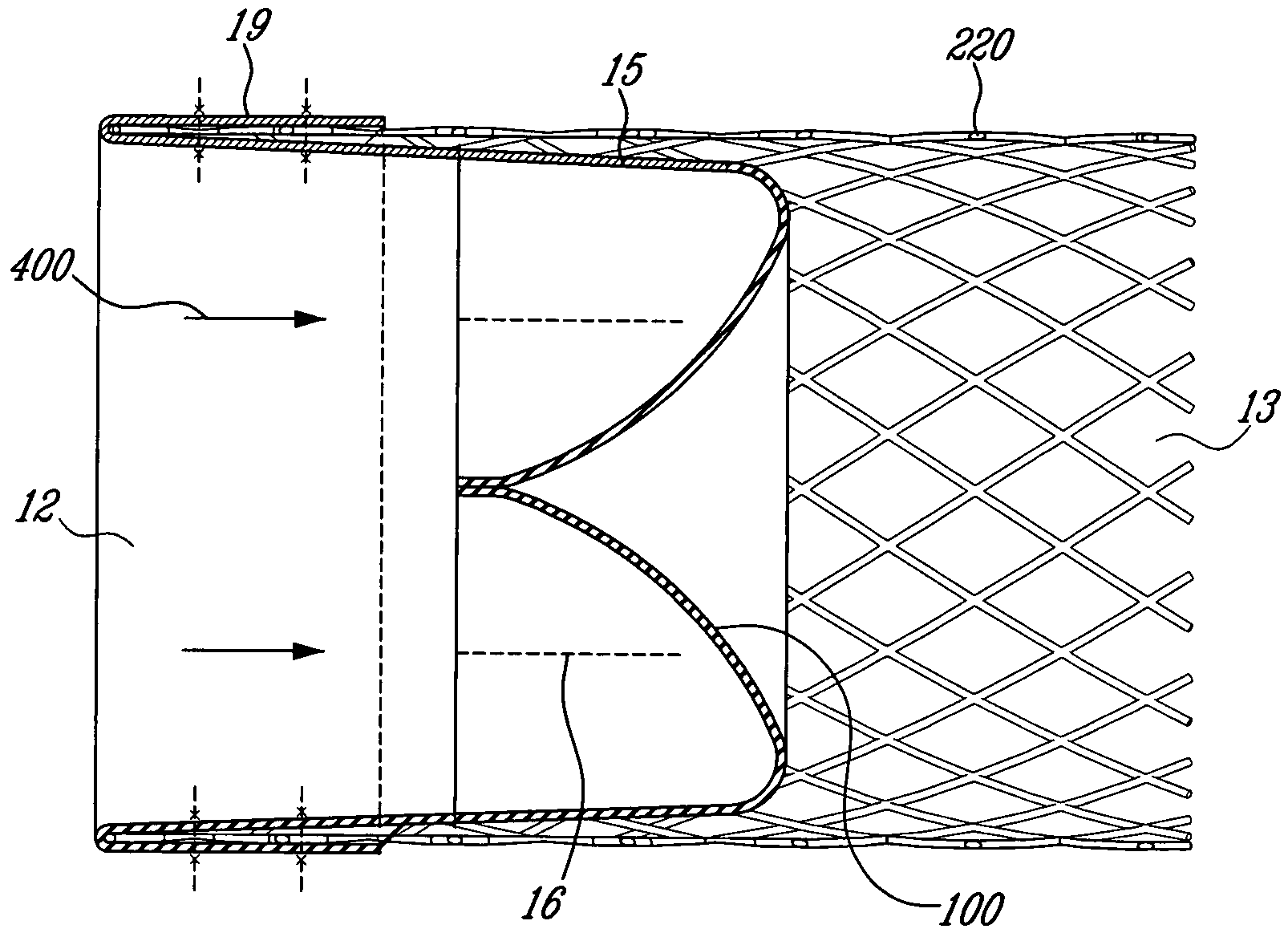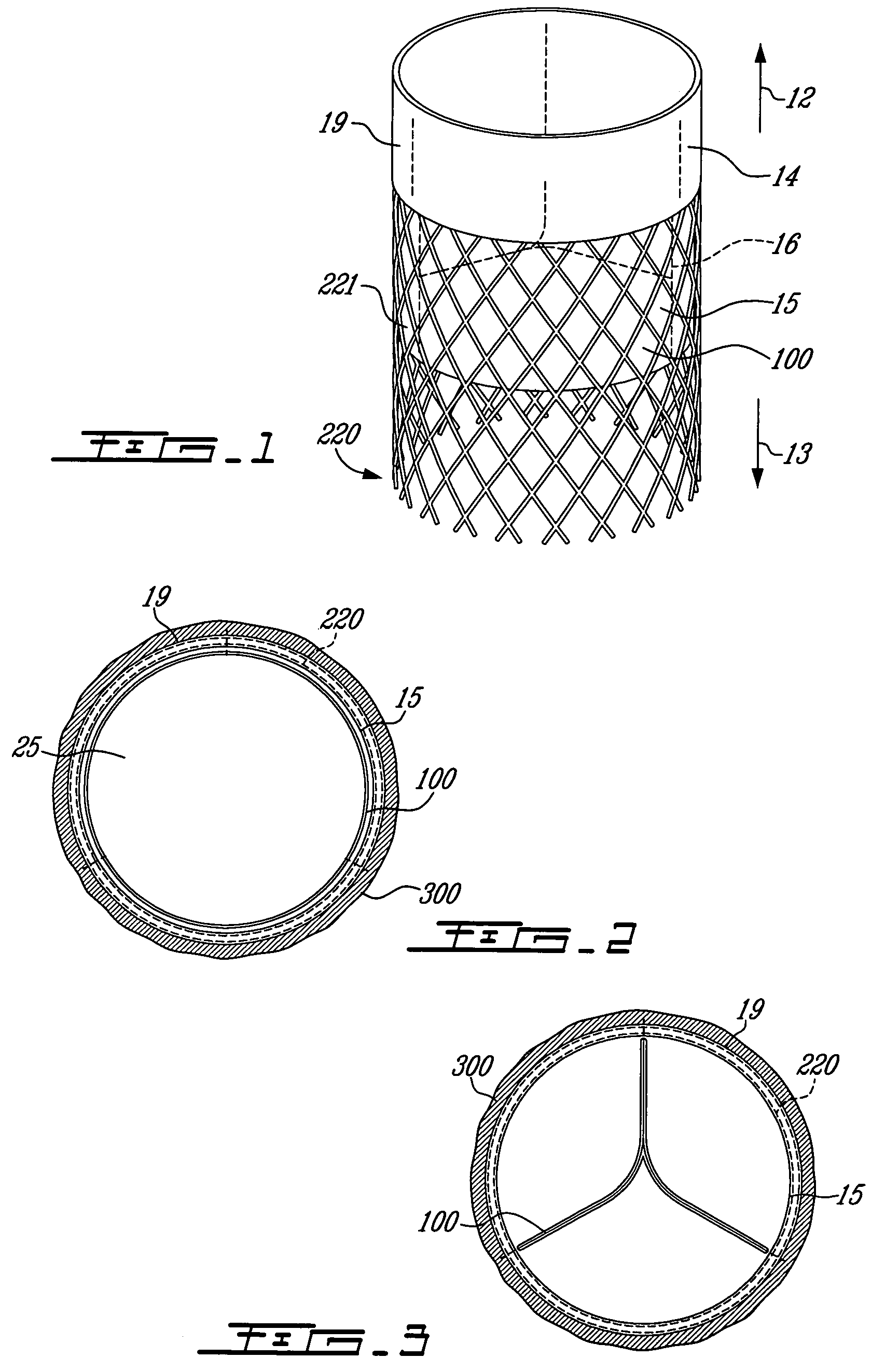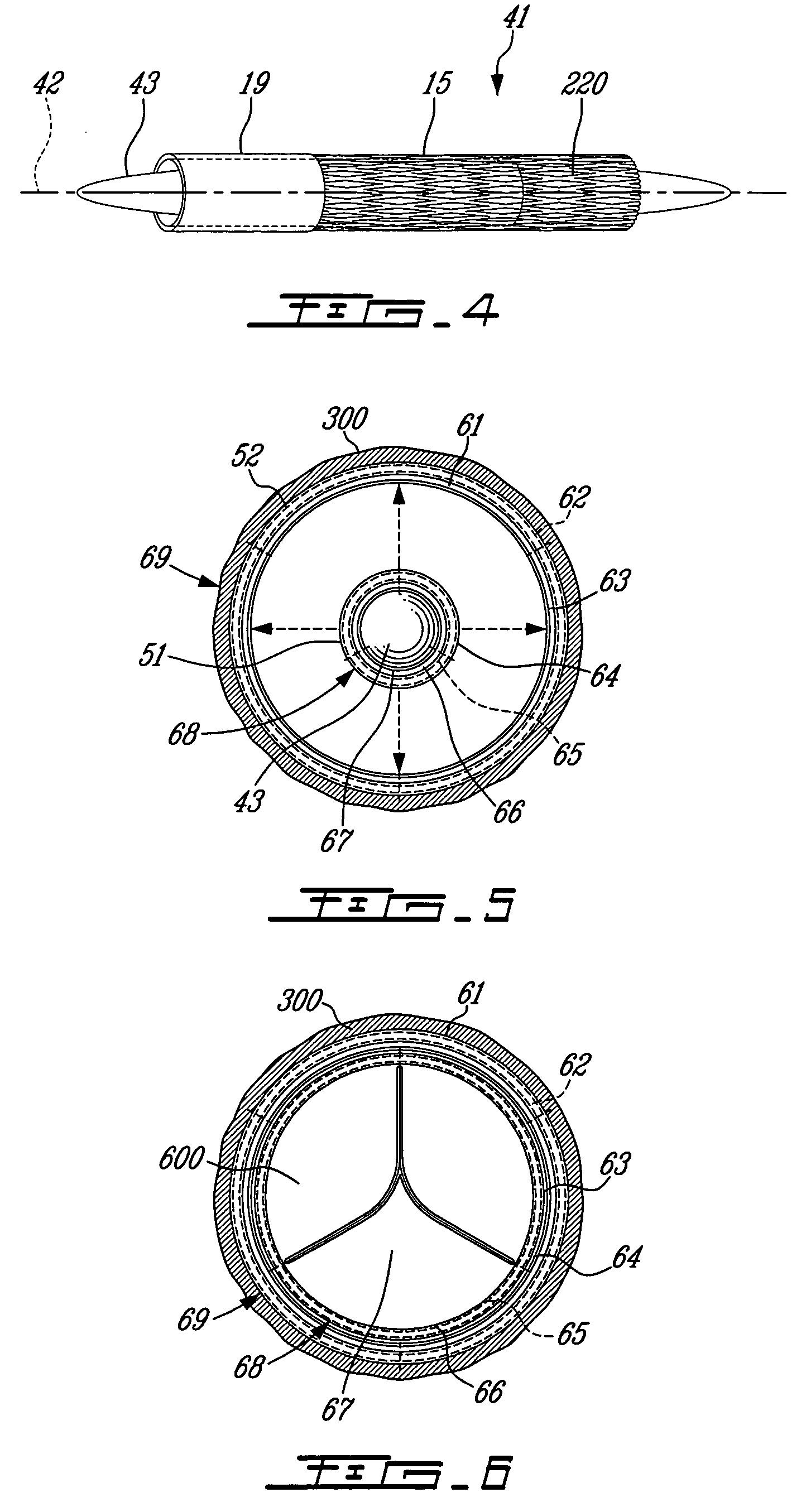Stent mounted valve
a valve and stent technology, applied in the field of medical devices, can solve the problems of child simply “outgrowing” a valve, set of even greater challenges, etc., and achieve the effects of promoting or inhibiting the infiltration of cells onto the valve material, and preventing the formation of thrombosis
- Summary
- Abstract
- Description
- Claims
- Application Information
AI Technical Summary
Benefits of technology
Problems solved by technology
Method used
Image
Examples
Embodiment Construction
[0074] In accordance with an aspect of the invention, preferred embodiments of a prosthetic valve are provided. It should be understood that throughout this application, the term “prosthetic valve” is used to mean any valve, whether implanted surgically or percutaneously, which is not a completely naturally occurring valve. This includes mechanical valves, biological valves made from living tissues, and polymer valves which combine features from both mechanical valves and biological valves.
[0075] The replacement of the pulmonary valve in a small child will be discussed in detail as an example. However, it should be understood that the present invention is not limited to this valve, and may be used to replace any of the cardiac valves, any venous valves, or any other valves in the body. As well, this invention can be used to establish valves in the body where no natural valves exist. For example, valves can be placed in the branch pulmonary arteries in patients where the main pulmon...
PUM
 Login to View More
Login to View More Abstract
Description
Claims
Application Information
 Login to View More
Login to View More - R&D
- Intellectual Property
- Life Sciences
- Materials
- Tech Scout
- Unparalleled Data Quality
- Higher Quality Content
- 60% Fewer Hallucinations
Browse by: Latest US Patents, China's latest patents, Technical Efficacy Thesaurus, Application Domain, Technology Topic, Popular Technical Reports.
© 2025 PatSnap. All rights reserved.Legal|Privacy policy|Modern Slavery Act Transparency Statement|Sitemap|About US| Contact US: help@patsnap.com



